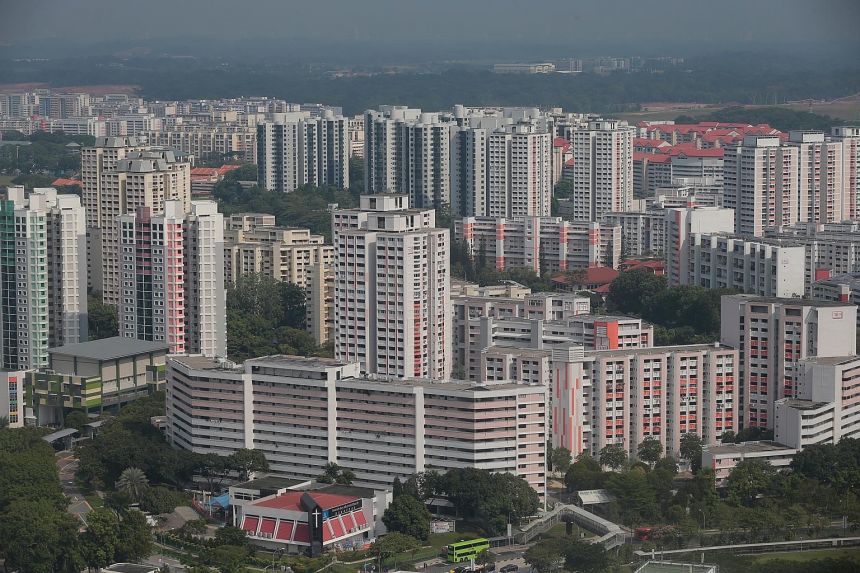Land availability a sound basis to determine mature, non-mature status of HDB towns: Experts
Sign up now: Get ST's newsletters delivered to your inbox

Jurong East, which has flats nearly 30 years old, is classified a non-mature estate.
PHOTO: ST FILE
Follow topic:
SINGAPORE - The classification of Housing Board towns into mature and non-mature estates based on the availability of land, instead of the age of existing flats, is a sound metric that is commonly used in urban planning, say analysts.
It also gives buyers a sense of the pricing and amenities expected, they added.
In a Build-To-Order (BTO) sales exercise that concluded on Tuesday (Aug 17), Hougang and Jurong East - both with HDB flats close to 30 years old - were classified as non-mature estates.
ERA Realty head of research and consultancy Nicholas Mak said it is more useful to use availability of land as the metric from a policy and land planning perspective as the age of existing flats can be a "moving target".
"How do we judge the age of a town when some parts may be older and more built up than another part? Do we use the average age of the blocks in the whole town?" he said.
"Hougang may be seen as an old town in terms of age, but in terms of land that can be redeveloped for future housing, it may not yet hit the threshold for a mature town," said Mr Mak, citing the area around Defu industrial estate as an example.
"The classification is an additional tool to derive information when making policies, such as directing more young couples to certain towns to balance out an ageing population," he added.
In 2017, the Ministry of National Development said that the availability of land in each town is used in the mature and non-mature classification, although it did not give more details.
"Non-mature towns refer to those where there is more land available for public housing development, whereas mature towns are usually those with limited land for public housing development," said MND.
During BTO and Sale of Balance Flats exercises, the estate classifications of the flats on offer are stated in the sales brochures, added MND.
Mature towns include Queenstown, Clementi, Ang Mo Kio and Pasir Ris, while non-mature towns include Yishun, Bukit Panjang, Sembawang and Sengkang.
Prices of BTO flats and resale flats are generally higher in mature estates than those in non-mature estates.
In the recently concluded BTO sales exercise, prices start from $382,000 for a three-room flat and $540,000 for a four-room flat in Queenstown.

In comparison, prices start from $199,000 for a three-room flat and $324,000 for a four-room flat in one of the two BTO projects in Hougang.
National University of Singapore real estate adjunct associate professor Steven Choo said the mature and non-mature classification of HDB towns and estates, which has become a market convention, has its place and should remain.
It is useful to help buyers form a mental map of various neighbourhoods, a sense of value and pricing expectations of a particular town, said Dr Choo, who is a veteran urban planner.
"If a town is listed as non-mature, there's a certain expectation on the flat pricing and the type of amenities in the area," he said.
"Of course, much will depend on the specific location of the site - whether it's a five-minute walk or a feeder bus ride to the nearest MRT station, shopping mall or school - but it helps buyers to form a topline impression."
He noted that the housing market in Singapore typically relies heavily on conventions that have been phased out long ago, such as the two-digit postal district codes which were replaced in 1979.
For instance, District 9 refers to Orchard and River Valley area, while District 10 comprises of Bukit Timah, Holland Road and Tanglin.
"We don't use those district codes in our addresses any more, but yet when you say District 9 or 10, you can immediately gauge the market standing of that area," he said.
ERA's Mr Mak agreed: "It's better to have the classification than not have it because people need some kind of differentiation to make informed decisions.
"If we do away with the classification, it wouldn't be long before people start asking why this area is more expensive than the other one because there's no benchmark for comparison."

